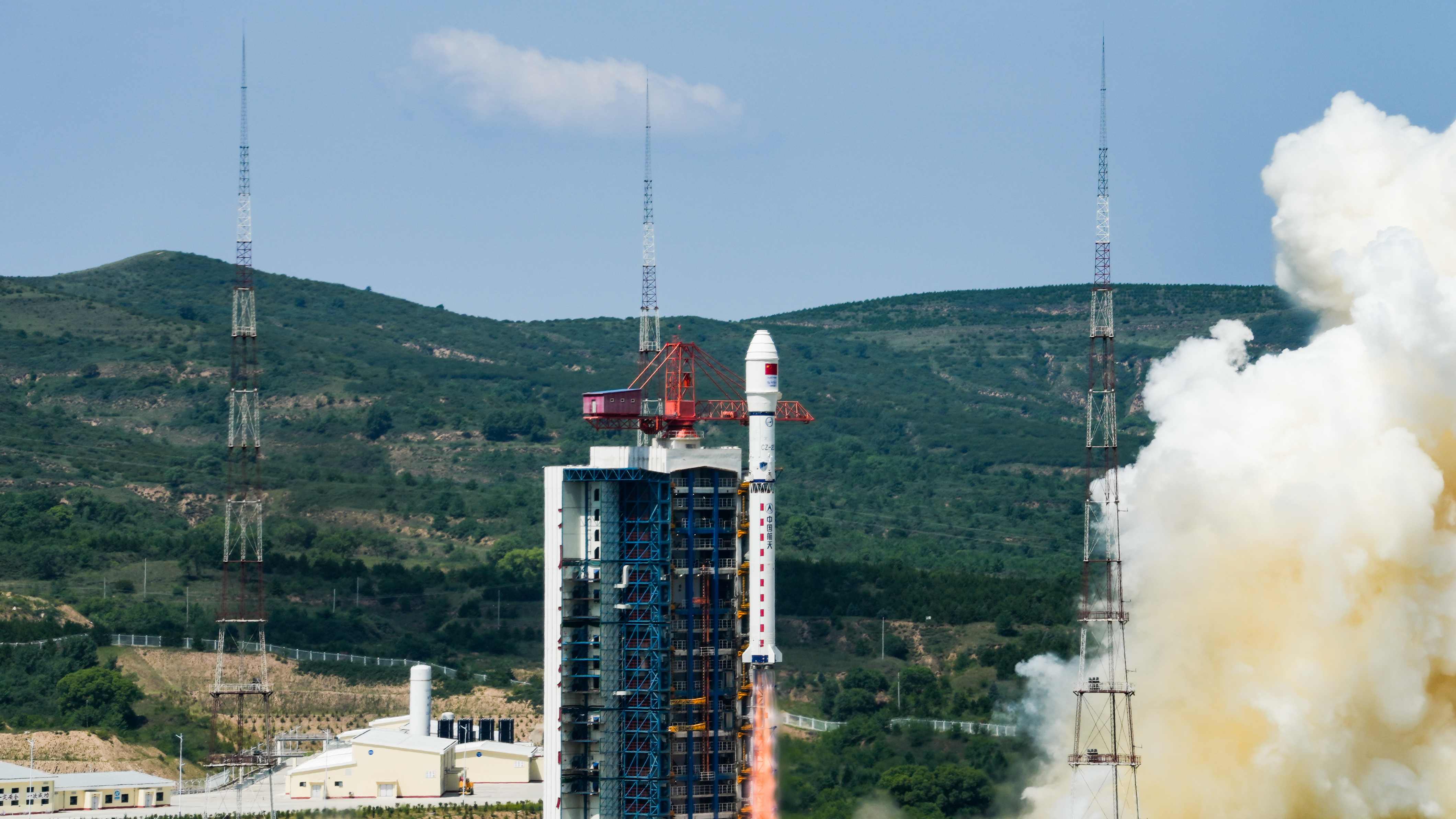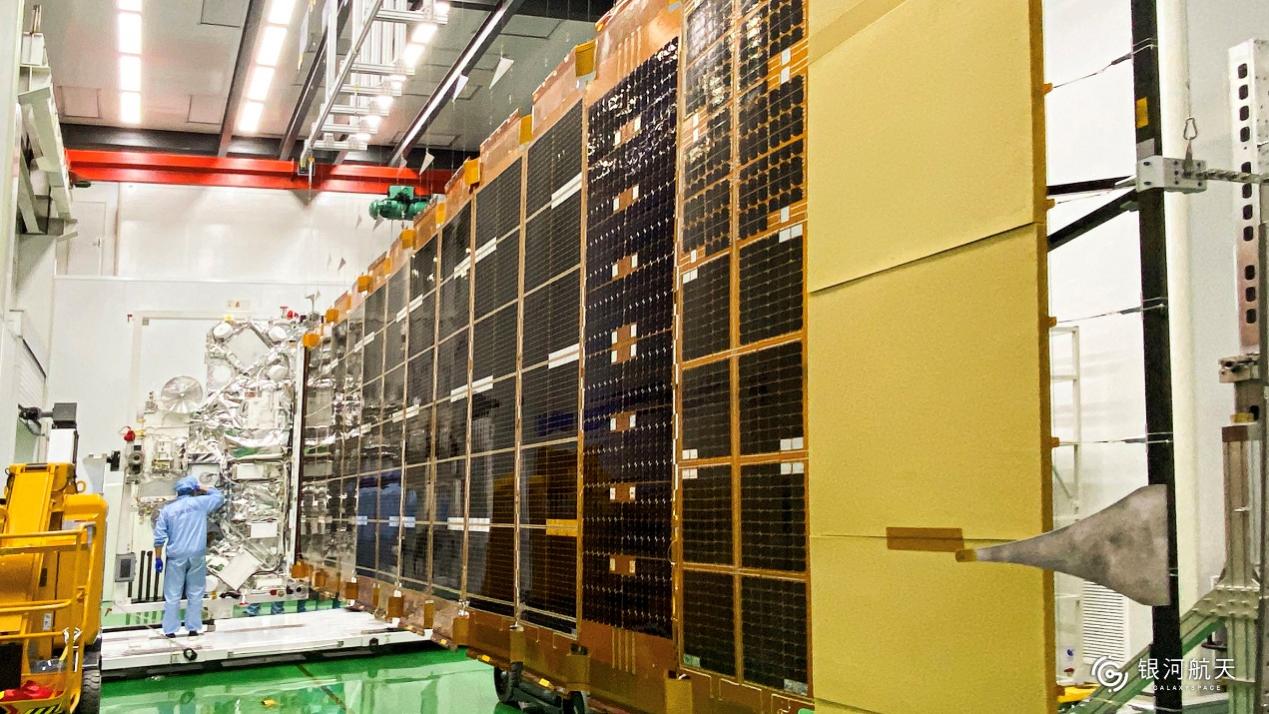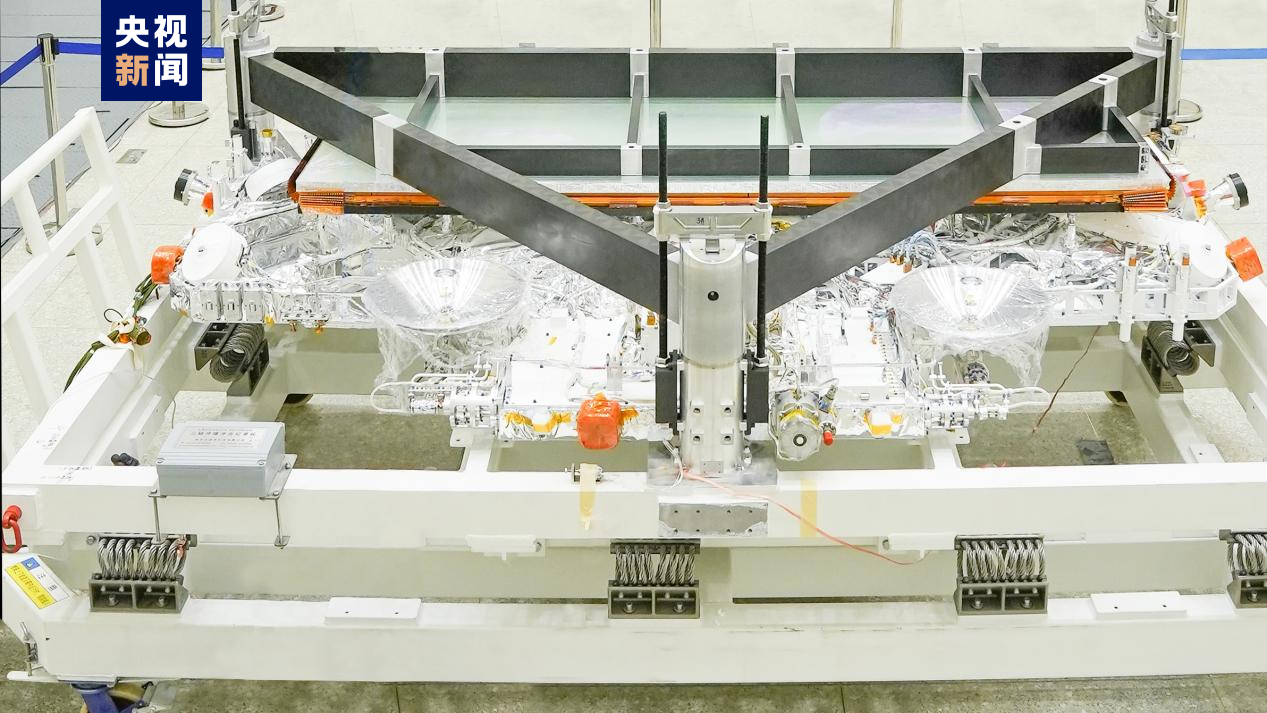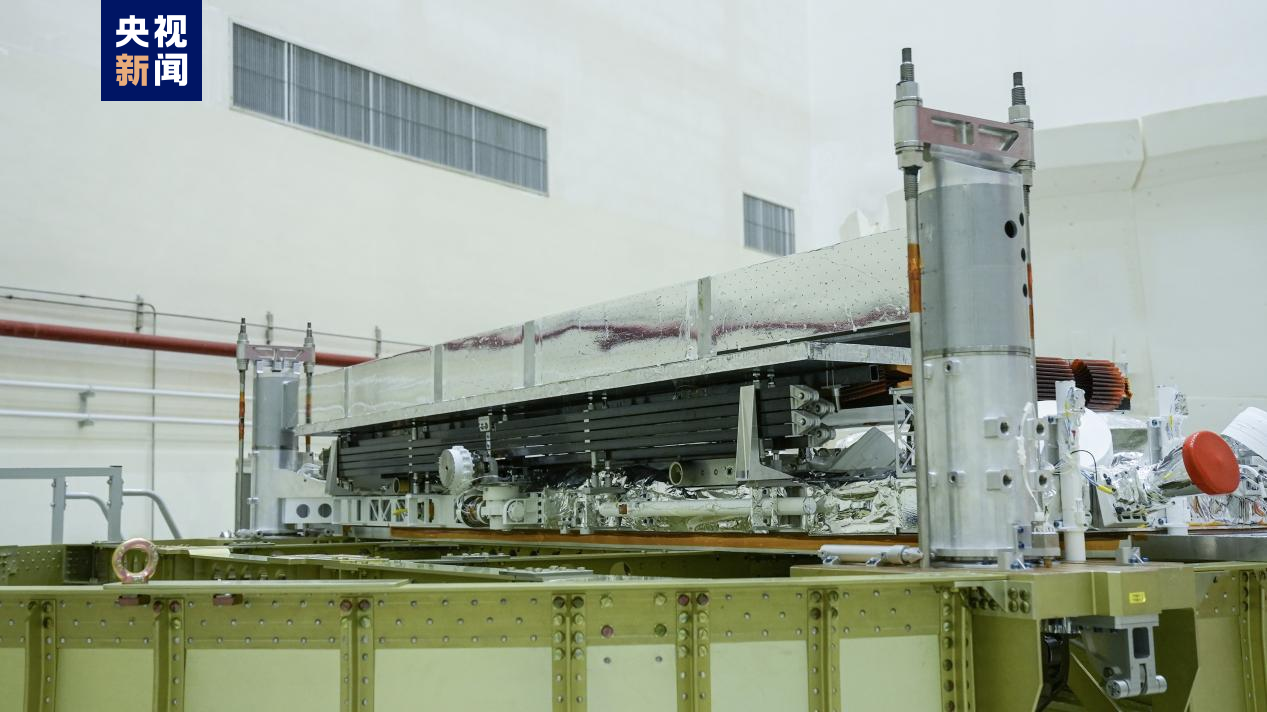00:35

China launched its first flat-panel stackable satellite with a flexible solar wing on Sunday, along with another three remote sensing satellites, from the Taiyuan Satellite Launch Center in north China's Shanxi Province.
Sent by a Long March-2D rocket which blasted off at 10:50 a.m. Beijing Time, all four satellites have entered their preset orbit.
The three remote sensing satellites, one developed by Chinese private company Skysight and the other two by Beijing-based aerospace company GalaxySpace, will be used for remote sensing observation and application with respective payloads.
This is the 479th launch mission of the Long March carrier rocket family.
First with flexible solar wing

The unfolded flexible solar wing of the Lingxi-03 satellite. /GalaxySpace
The unfolded flexible solar wing of the Lingxi-03 satellite. /GalaxySpace
The communications satellite, known as Lingxi-03, developed by GalaxySpace, is the first in China to use a flexible solar wing that is small, lightweight and features modularization.
The wing is extremely thin, with a thickness of about 1 millimeter for a single-layer flexible solar panel.
It can be folded with a thickness of less than 5 centimeters when loaded inside the rocket but can stretch to a length of about 9 meters and a width of more than 2.5 meters when working in orbit.
Compared to conventional solar wings, the flexible one provides a larger surface area, enabling it to absorb more solar energy.
'Intelligent' satellite

A view of the communications satellite Lingxi-03 developed by GalaxySpace. /China Media Group
A view of the communications satellite Lingxi-03 developed by GalaxySpace. /China Media Group
The plate-like satellite is equipped with a millimeter-wave multi-beam digital payload with a capacity of tens of gigabits per second. It will be used to verify technologies, including the next generation of low-Earth orbit broadband satellite communication and multi-satellite stack compression release.
The digital payload serves as an intelligent brain for the satellite, enabling it to flexibly allocate communication resources and conduct computations and beam deployment in line with operational demands.
The satellite is also equipped with an active thermal control fluid circuit, which will function like an air conditioning system that actively regulates its working temperature.
Sunday's launch also marks the first in-orbit verification of multi-satellite stack launch technology in China, providing technical support for the rapid deployment of the country's large-scale low-Earth orbit communication constellation.
Earlier this year, the company launched four interferometric synthetic aperture radar (InSAR) satellites of its PIESAT-1 constellation to provide commercial remote sensing data services, which constituted the world's first wheel-pattern satellite formation in orbit.
The satellite maker said it will promote the mass production of stackable flat-panel satellites and make breakthroughs in core technologies, such as phased array antennas for direct satellite-to-device communication, satellite-borne large energy systems and digital processing payloads to accelerate construction of a satellite internet constellation, said Zhu Zhengxian, chief technology officer (CTO) of GalaxySpace.
Satellite for the 6G era

A view of the communications satellite Lingxi-03 developed by GalaxySpace. /China Media Group
A view of the communications satellite Lingxi-03 developed by GalaxySpace. /China Media Group
Zhang Shijie, chief scientist of GalaxySpace, said satellite internet represented by low-Earth orbit giant broadband communication constellations has gradually emerged in recent years, thanks to its full coverage, high bandwidth, low delay of signals and low cost.
In this case, satellite communications are no longer affected by the geographical environment, becoming a new solution for global network coverage.
Zhang further said more practical satellite internet applications would accelerate the complementarity and integration between satellites and the terrestrial 5G network.
In the approaching 6G era, Zhang said satellite internet will also support the ubiquitous network demand of the Internet of Everything, solving users' internet problems in remote places, oceans and aviation.
As more types of satellites are launched into orbit, Zhang believes satellite applications, such as direct connection between mobile phones and satellites and satellite applications in the industrial field, will continue to grow.
Ultimately, an integrated network of air, space, land and sea with communication, computing and perception functions will push human society into a 6G era of ubiquitous global intelligent coverage.
(CGTN's Wu Lei contributed to this story.)
(Cover Image: A Long March-2D rocket carrying four satellites blasts off from the Taiyuan Satellite Launch Center in north China's Shanxi Province, July 23, 2023. /GalaxySpace)